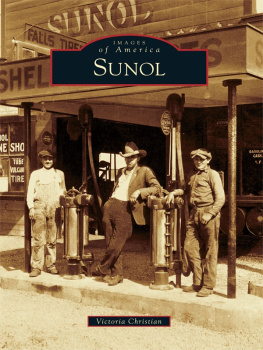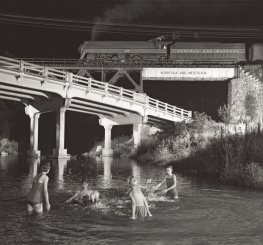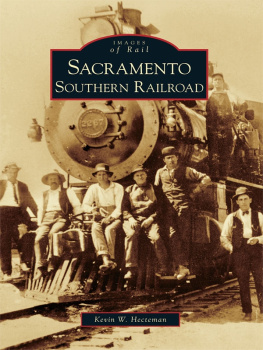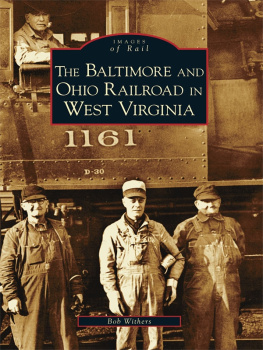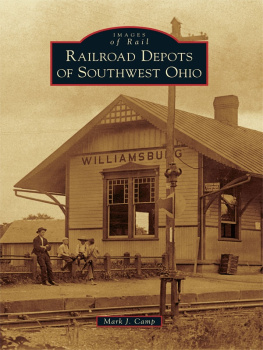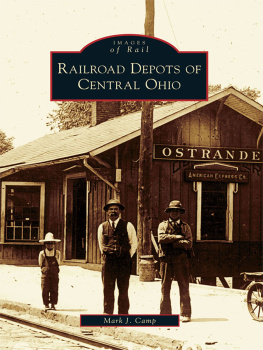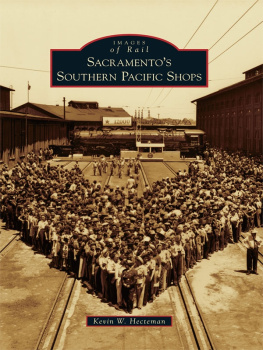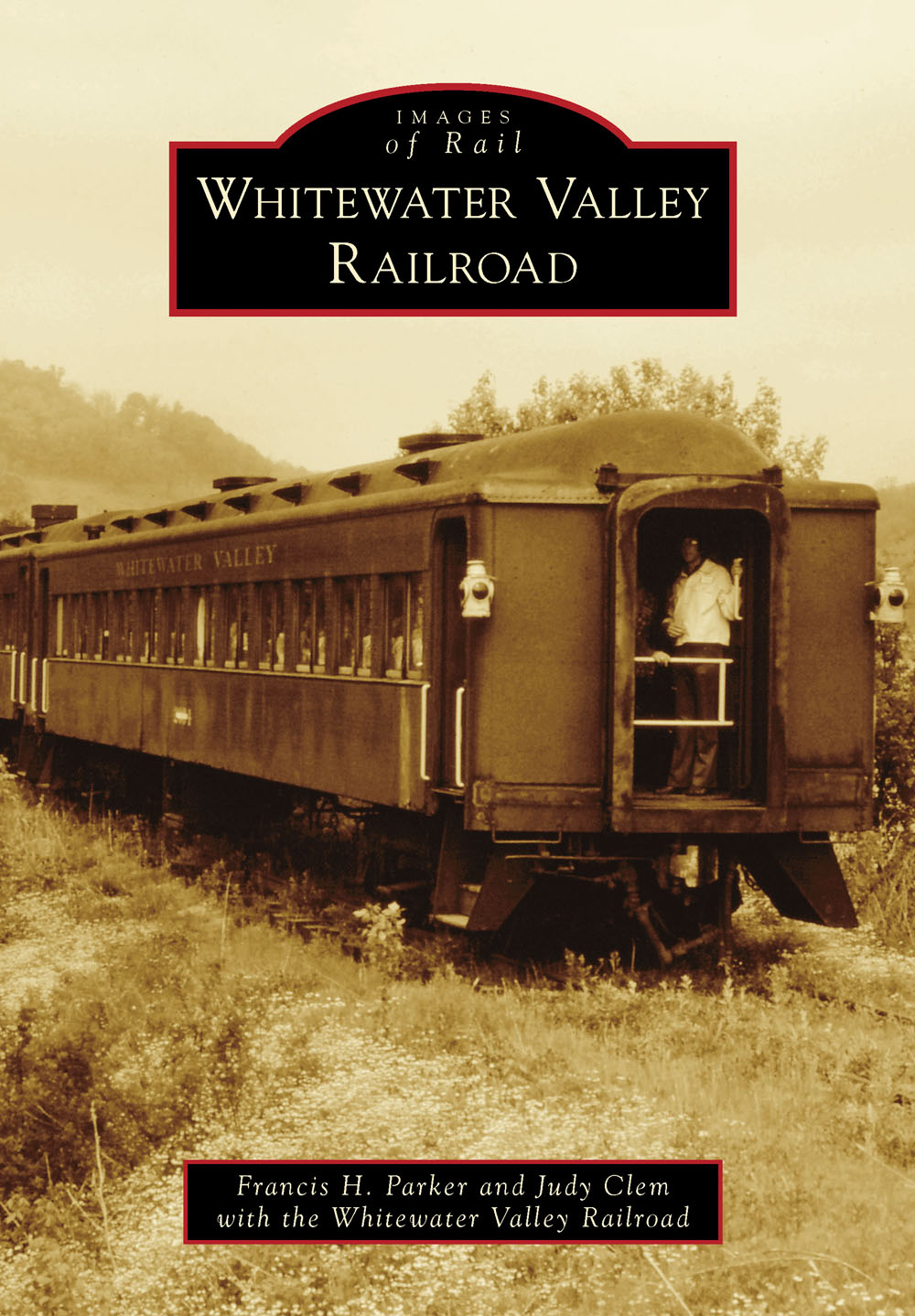
IMAGES
of Rail
WHITEWATER VALLEY
RAILROAD
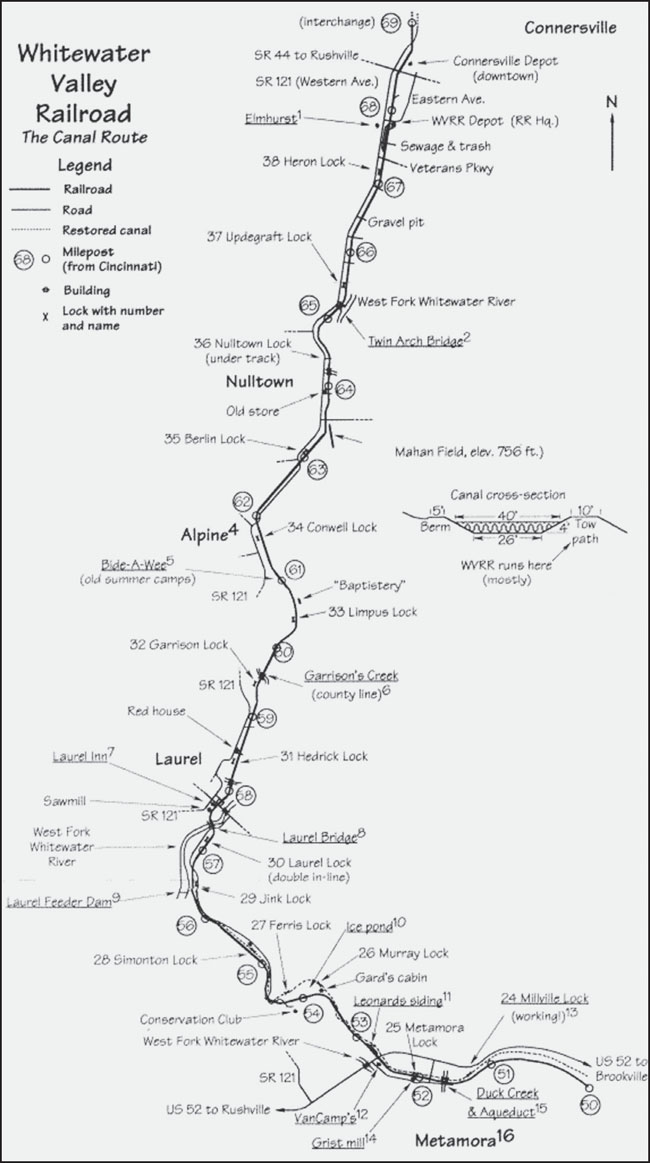
This map of the Canal Route on the Whitewater Valley Railroad was designed by William and Trish Eccles. The map, given to passengers when they ride the Valley Flyer train from Connersville to Metamora, shows mileposts, canal locks, towns, and important places. (Whitewater Valley Railroad archives.)
ON THE COVER: In 1974, the first season of operation, a Whitewater Valley Railroad train is seen south of Metamora, heading for Brookville along the restored Whitewater Canal. The location is near railroad milepost 51, across the canal and US Highway 52 from the Hearthstone Restaurant. (Michael Weber.)
IMAGES
of Rail
WHITEWATER VALLEY
RAILROAD
Francis H. Parker and Judy Clem
with the Whitewater Valley Railroad

Copyright 2014 by Francis H. Parker and Judy Clem with the Whitewater Valley Railroad
ISBN 978-1-4671-1148-5
Ebook ISBN 9781439644928
Published by Arcadia Publishing
Charleston, South Carolina
Library of Congress Control Number: 2013946710
For all general information, please contact Arcadia Publishing:
Telephone 843-853-2070
Fax 843-853-0044
E-mail
For customer service and orders:
Toll-Free 1-888-313-2665
Visit us on the Internet at www.arcadiapublishing.com
To all the volunteers past and present of the Whitewater Valley Railroad, this book would not have been possible without all of your hard work.
CONTENTS
ACKNOWLEDGMENTS
Many current and former Whitewater Valley Railroad members have contributed photographs for this book. Other images have come from outside sources and collections. We would like to acknowledge the Connersville and Brookville public libraries and the Whitewater Valley Railroad archives. Early members who took many photographs include Fred Bunzendahl, whose collection was loaned by his son, Fred N. Bunzendahl; William Hassman; John Hillman; Manfred Schnetzer; and Michael Weber. Members through the years since then have contributed images, including Ben Clem, Judy Clem, Mary Deisman, Martin Hanagan, Cornelius Hauck, Mary Malloni, the family of Jack Maple, Francis Parker, Howard Pletcher, Thomas Bookout, Patrick Ripberger, Chris Smith, William Gray, Emmett Vaughan, and Loran Hoffmeier. Photographer Ronald Stuckeys New York Centralera photographs are in the collection of John Fuller. There was no room for photographs from everybody who contributed, but their collective contributions allowed us to cover all eras of the railroad. We would also like to acknowledge William Gray and David Farlow for proofreading, fact-checking, and editing.
INTRODUCTION
This history of the Whitewater Valley Railroad covers the period from 1972 to the present, with a brief introduction to its predecessors, including the Whitewater Canal and the original White Water Valley Railroad. It focuses primarily on the efforts of dedicated volunteers who for 40 years have worked to preserve, maintain, and operate a historic railroad.
The Whitewater Valley Railroad (WVRR) is located in scenic southeastern Indiana. It was created by local organizers who incorporated the Whitewater Valley Canal and Railroad Restoration Association in December 1972. Their objective was to operate the unused Penn Central Railroad between Connersville and Brookville, on the towpath of the former Whitewater Canal. Public passenger trains first operated in May 1974 over 24 miles of track between Connersville and Brookville. Service was cut back in 1975 to 16 miles, from Connersville to Metamora, plus two miles beyond Metamora.
Today, the Whitewater Valley Railroad owns and operates 19 miles of track, from the south end at milepost 50 to the north end at milepost 69. Mileposts describe the distance from Cincinnati, although track no longer exists between Metamora and Brookville. The communities on the line include Connersville (mileposts 68 and 69), Laurel (milepost 57.7), and Metamora (milepost 52).
The railroad has always been operated by volunteers. The Whitewater Valley Railroad was not the first line to be preserved and operated by volunteers, but it was among the early examples. The railroad was inspired by the pioneering Talyllyn Railway in Wales in 1951 and the Strasburg Railway in Pennsylvania in 1958. The Whitewater Valley Railroad was among the early US organizations to think in terms of operating an entire railroad rather than simply a static railroad museum. With its initial 24 miles of line, it may also have been the longest example of a volunteer-operated railway.
The Whitewater Valley Railroad is known as the canal route, because its tracks are located on the towpath of the former Whitewater Canal. The canal, built between 1836 and 1847, followed the banks of the Whitewater River, an early trade route into Indiana. Authorized by the Indiana Internal Improvements Act of 1836, the canal was opened by state construction between the Ohio River and Brookville in 1839. The overly ambitious internal improvements program forced the state government into bankruptcy the same year, and the canal was completed to Connersville in 1845 by the private Whitewater Canal Company, headquartered in Connersville. It was completed to Hagerstown in 1847.
The canal struggled with droughts, floods, washouts, and winter closures. By the 1860s, it was essentially defunct. It was purchased in 1863 by the Indianapolis & Cincinnati Railroad (I&C), which used it as a track bed to enter Cincinnati. A subsidiary of the I&C, the White Water Valley Railroad, built north on the towpath through Brookville and Metamora. It reached Connersville in 1867 and terminated in Hagerstown, milepost 88, in 1868.
By 1870, the White Water Valley Railroad had become the White Water Valley Division of the Indianapolis, Cincinnati & Lafayette Railway. It was reorganized again in 1878, and in 1890, it was absorbed by the Cleveland, Cincinnati, Chicago & St. Louis Railway. This line, also known as the Big Four Railroad, was a part of the Vanderbilt-controlled New York Central System, into which the Big Four formally merged in 1930.
The Whitewater Division was abandoned between Beesons and Hagerstown in 1931, and all passenger service on the division ended in 1933. Daily freight service continued, with a local switch engine stationed in Connersville to serve industries.
In 1968, the New York Central and Pennsylvania Railroads merged to form the Penn Central Corporation. The firm filed for bankruptcy protection in 1970. In 1972, the Penn Central ceased operating the 24 miles between Brookville and Connersville. Service continued between Valley Junction and Brookville, as well as an isolated Penn Central switching operation in Connersville.
In 1972, the Whitewater Valley Canal and Railroad Restoration Association was formed, with an eye to operating the dormant tracks between Connersville and Brookville. The group saw an opportunity for tourist traffic, stimulated by the growing popularity of recreation along the Whitewater River and the establishment of the Whitewater Canal State Memorial at Metamora in 1945. Metamora was becoming a tourist destination, and the tracks ran right through the heart of it on the old canal towpath. The combination of a train ride and an interesting destination seemed promising.
In 1973, the association leased 24 miles of Penn Central track between Brookville and Connersville and began to assemble some passenger cars and cabooses and a diesel locomotive. Limited demonstration runs were performed in 1973, and in May 1974, regular weekend train service commenced. Although a washout in 1975 cut the track north of Brookville, the line continued to operate 19 miles from Connersville through Metamora.
Next page


